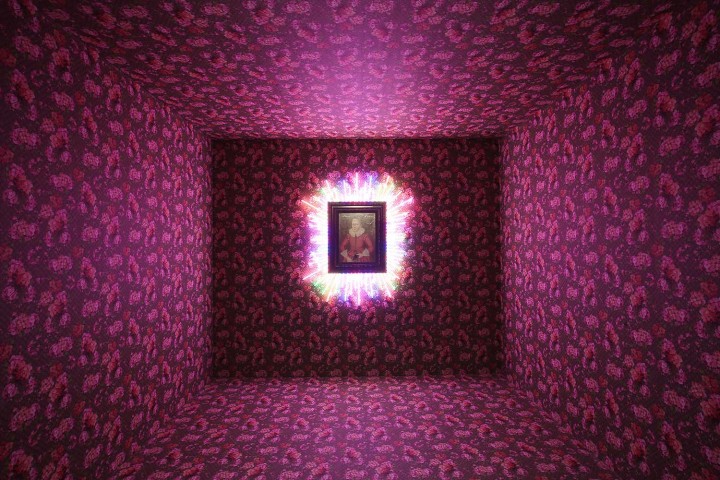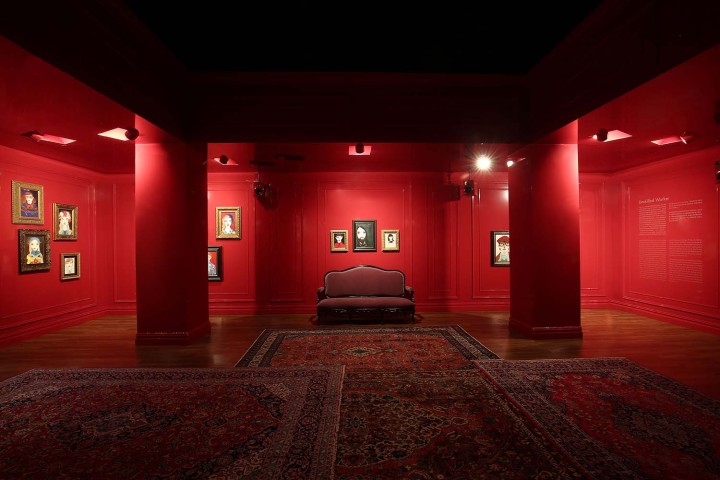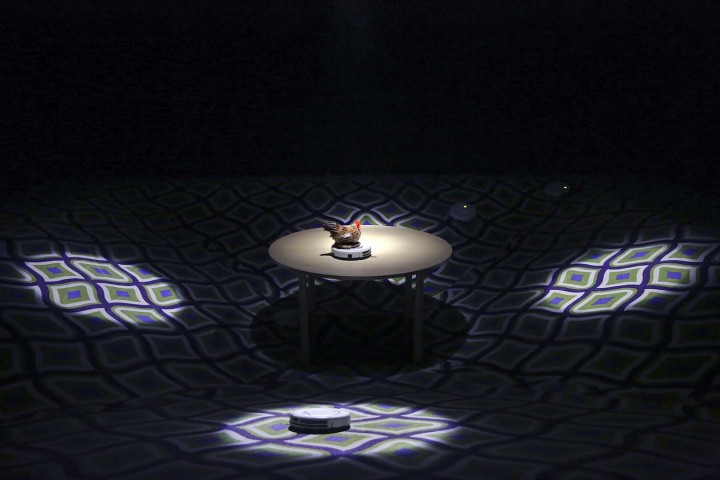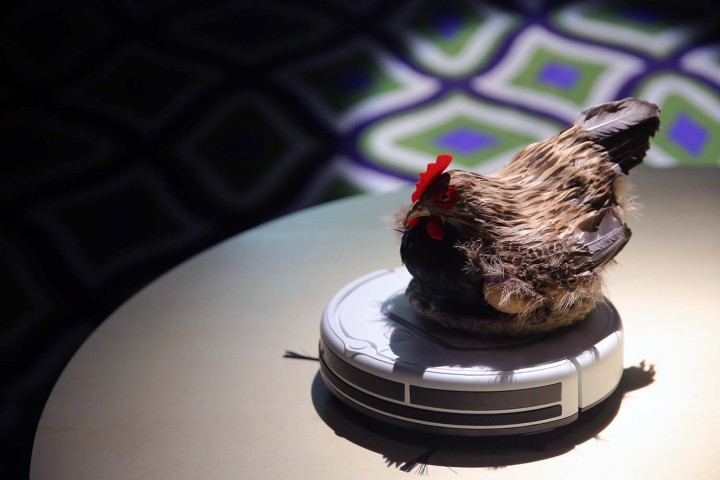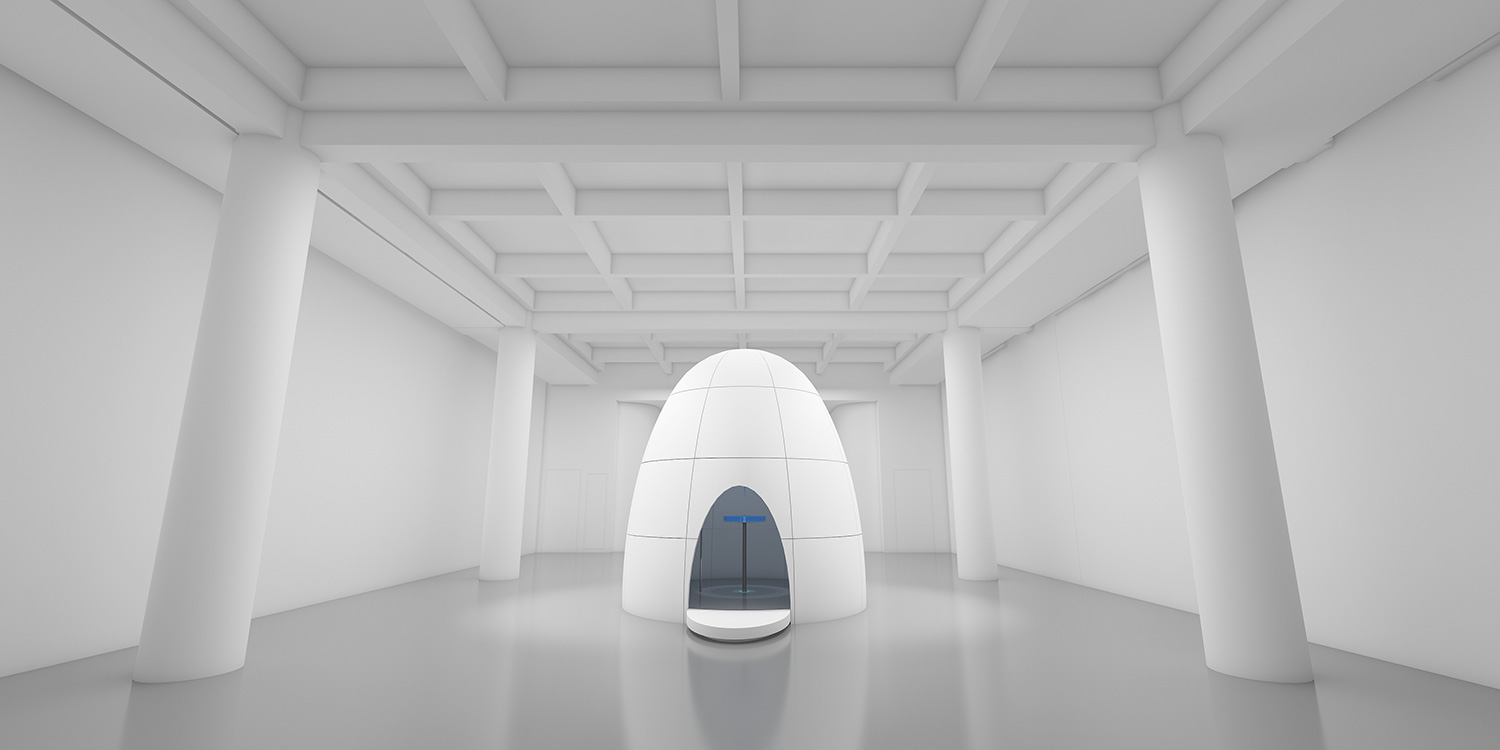In Cao Fei’s installation Rumba 2 —one of the eight rooms in the exhibition “No Longer, Not Yet” — toy chickens ride Roombas. The robotic vacuum cleaners roam sloping floors, cleaning the fibers of a carpet created from a print used in Gucci’s autumn/winter 2015 collection.
Young women in their twenties, the show’s predominant visitor demographic, take languid selfies in spotlit sections of carpet while a video of Rumbas sucking dust out of Chinese construction sites plays on a projector. Landscapes are transformed onscreen — buildings demolished and replaced — while classes are delineated offscreen. Some have robots to clean their living rooms; others haul away busted bricks by hand.
As young Chinese seek to establish themselves among the upper echelons of emerging classes, luxury brands such as Dior and Chanel have enjoyed great success with branded exhibitions. Gucci joins them with this show, which includes works by contemporary artists Jenny Holzer, Li Shurui and Rachel Feinstein. There’s also fashion photography by Glen Luchford and Nigel Shafran.
The exhibition may have been curated by Alessandro Michele, creative director of Gucci, and Katie Grand, editor of Love magazine, but it has been dressed by a bigger team. In place of the Minsheng Art Museum’s usual naked concrete floors and bare white walls, Stefan Beckman has decorated the show’s various rooms in luxurious-seeming materials including wooden floors, “herbarium” wallpaper, Turkish rugs and mirrored ceilings. Sound design by Steve Mackey and John Gosling issues from speakers painted the same deep red as the walls in “Unskilled Worker” Helen Downie’s portrait salon. The same branded wallpaper surrounds a replica of Michele’s favorite painting, The Boy in Red. Within such a tastefully matching environment, it’s hard not to think of the artworks themselves as just more accessories in Gucci’s closet.
When Roombas sense a wall or a steep drop in front of them they stop, pivot counter-clockwise ninety degrees and try to move forward again. At one point, one of Cao Fei’s droids found itself in an irregular corner that necessitated a seven-point turn. Its exit was nevertheless more artful than this exhibition’s admixture of brand history, products and commissioned artworks.

